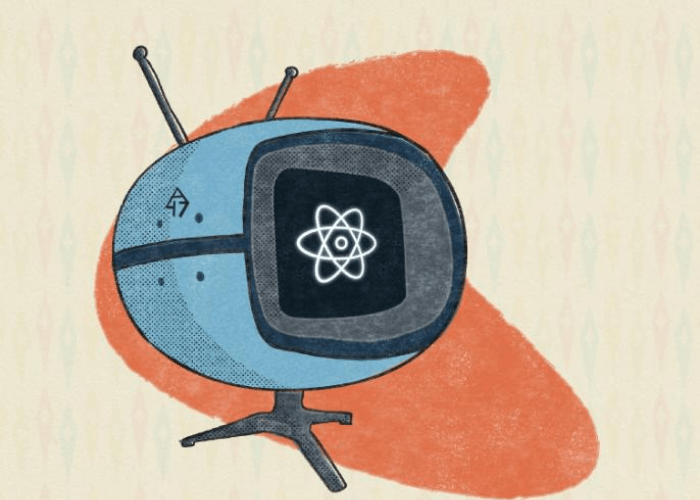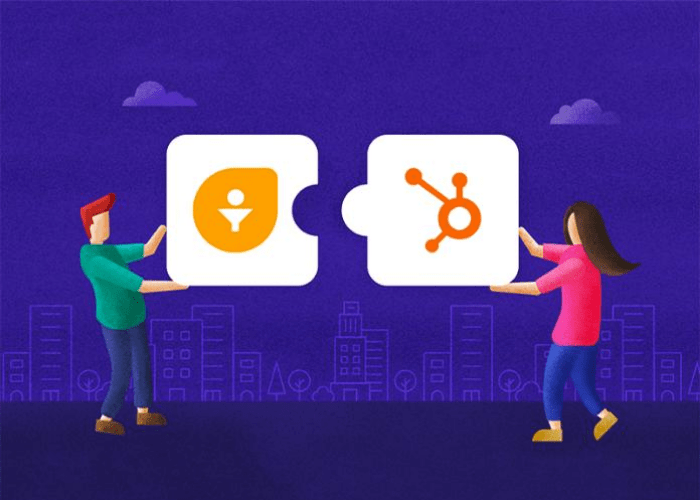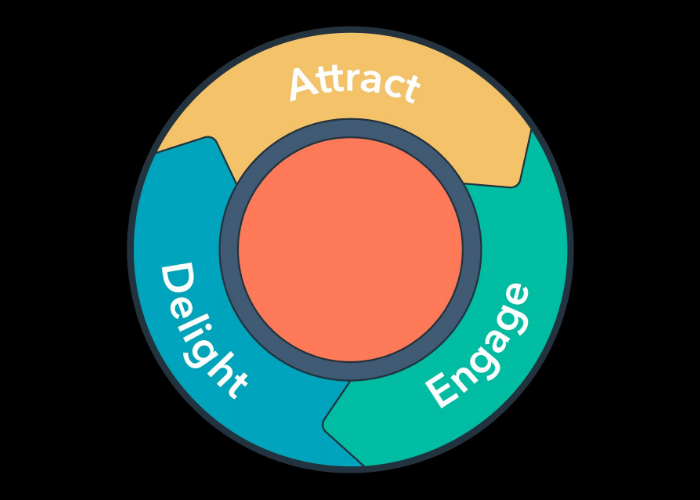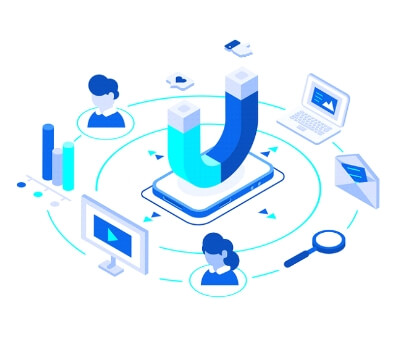Throughout history and before the arrival of the inbound methodology, marketing and advertising were almost completely outbound. According to Peter F. Drucker, the patriarch of modern business and marketing, inbound marketing took root as far back as the mid-1850s when Cyrus Hall McCormick, who invented the mechanical harvester, used market research to develop inbound methods for generating consumer interest in what was then a radical evolution in farming.

By the 1950s and ’60s, market research took hold, which allowed marketers to collect information on their customers’ interests and habits. Not only did this information let marketers create more pointed campaigns and better understand their consumers’ buying journeys, but it also made consumers feel more involved in the sales process.
The result of these advances was a quick rise in interruptive outbound marketing in the form of billboards, door-to-door sales, TV and radio commercials, print ads, and maybe that was the most horrific medium of all.
By the 1970s, Drucker’s fundamentals on marketing were growing in popularity. Drucker believed that customer orientation and market segmentation were at the core of a powerful marketing strategy. He knew that the point of marketing was to “know and understand the customer so well that the product and service fits him and sells itself.” Furthermore, Drucker believed that, with the right method of marketing, all a business needs to do is make a product or service available so that “logistics rather than salesmanship” are what seals the deal.

“The best way to predict the future is to create it.”
- Peter Drucker
So, what is exactly the inbound marketing
Inbound marketing is about carrying solutions and opportunities that have an affirmative impact on people and on your business.
hmm, how do you do that?
There are so many definitions, but the best one was from HubSpot they defines inbound marketing as:
“Sharing is caring and inbound is about creating and sharing content with the world. By creating content specifically designed to appeal to your dream customers, inbound attracts qualified prospects to your business and keeps them coming back for more.”

By: https://dribbble.com/shots/3855529-Hubspot-Integration
In a scientific Definition: Inbound Marketing is the process of attracting prospects, via content creation, before they are even ready to buy.
It’s one of the best and most cost-effective ways to convert strangers into loyal customers.
The moment people arrive at your website, your sales team can engage with them using email and chat, Planting value as they learn about your brand.
Then, the customer service team role comes, they can help them long after they’ve become customers by acting as an advisor and expert on your product.
As we said before, Inbound is a method of attracting, engaging, and delighting people to plant a business that provides value and builds unbreakable trust.
As technology evolves, Inbound guides an approach for doing business in the most helpful way. Inbound is a better way to market, a better way to sell, and a better way to serve and help your customers. Because when “good for the customer” means “good for the business”, your company will grow better, stronger over the long term.
By creating content designed to address the problems and needs of your ideal customers, you attract qualified prospects and build trust and credibility for your business.
Inbound Marketing Methodology

These three methodology will help you effectively market to your target audience the inbound way. So there are specific strategies for each inbound method of attracting, engaging, and delighting consumers to help your business grow better.
Attracting Strategies
We want to attract the right strangers in other words “Your target persona” to your website and to your brand with quality, compelling content that answers the questions they have. We’ll use blogging, social media, content offers, keyword and SEO strategy, and even outbound advertising to reach them. Also provided values and guidance for your products. Give them solutions for their challenges. And don’t forget about customer testimonials, and details about promotions or discounts.
To attract your audience members on a deeper standard through inbound marketing, optimize all of this content with an SEO strategy. An SEO strategy will require you to target specific keywords and phrases related to your products or services.
This will allow your content and information to organically appear on the search engine results page for the people who are searching for this information.

Engaging Strategies
When you use inbound strategies to engage your audience, be sure that you’re communicating and dealing with leads customers in a way that makes them want to build a long term relationship with you.
When using these engagement strategies, Blast information about the value your business will provide them with.
Specific engagement strategies may include how you handle and manage your inbound sales.
Focus on how customer service representatives can handle interested people and prospects. Additionally, be sure you’re always selling solutions rather than selling products. This will ensure you that all deals end in mutually beneficial for customers and your business.
That means, you provide value for your right fit customers.
Delighting Strategies
Delighting inbound strategies guarantee customers are happy, satisfied, and supportive long after they make a purchase. These strategies involve your team members becoming experts and mentors who assist customers at any point in time.
Incorporating thoughtful, well-timed assistance, support, and request feedback from customers is a great way to delight these people. Bots and surveys should be shared at specific points in time throughout the customer’s journey to ensure they make sense and are valuable.
The mark of an inbound strategy focused on delighting customers is one that assists and supports customers in any situation, whether or not your business gets any value out of it.
Remember: a delighted customer becomes a brand advocate and promoter, so handle all interactions, both big and small, with care.
If so, what is Outbound Marketing?

Simply, outbound marketing on the other hand starts with some basic knowledge of your target audience and builds programs to teach those very specific potential about your products and services in a meaningful way.
Outbound marketing typically is accomplished using the more traditional ways such as direct mail, telemarketing, email marketing and events.
But what’s the difference between Inbound and Outbound Marketing?

The difference between inbound and outbound marketing is tender and often the lines between the two are blurred.
For example, an inbound marketing program can be used as the first step in a long-term marketing campaign to capture lead data,
whereas a related outbound portion would be used to nurture and educate those prospects to the point where they are ready to make a buying decision.
Together they create a sustainable, long-term program that can produce a continuous stream of sales opportunities.
Vital to the success of your business-to-business lead generation is the ability to leverage both inbound and outbound marketing mechanisms. Inbound marketing is necessary to complete your sales pipeline with new leads, while outbound marketing helps you track and drive your existing prospects through the buying cycle. Only through the combination of both practices can you build an effective lead generation engine capable of filling your sales pipeline.
Modernity of Inbound today and beyond
Today, inbound marketing is focusing on using relevant content that is catered for consumers throughout each stage of the buying.
This ensures not only that leads are moving through the funnel to become customers, but also that consumers are receiving the most personalized, meaningful experience.
Also, with inbound marketing, consumers find brands through search engines, social media, and blog articles.
The possibilities with inbound marketing are endless, especially with the rise of analytics and artificial intelligence, which allow companies to learn more, faster, and to deliver an even better, more personalized experience.
According to inbound marketing methodology, this very personalized strategy is what will make the sales process perfect and deliver on Drucker’s point, that by knowing and understanding a customer well enough, The product or service can simply sell itself.
